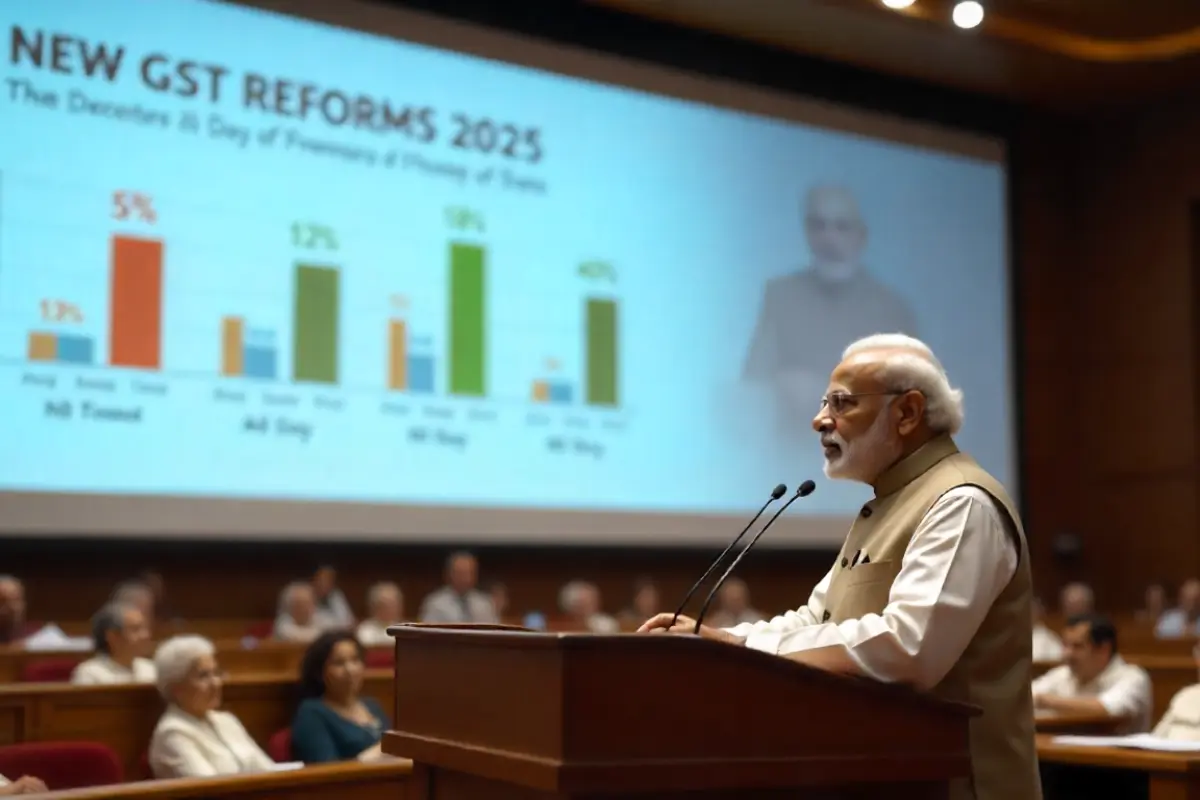New GST Reforms 2025 India simplify slabs to 5% & 18%, exempt insurance, and move luxury goods to 40%. Effective Sept 22, 2025.
 Brajesh Mishra
Brajesh Mishra

The New GST Reforms 2025 India, popularly called GST 2.0, mark the biggest overhaul of the Goods and Services Tax since its rollout in 2017. Effective from September 22, 2025, the reforms collapse the existing four-tier system into a simplified two-slab structure. Essentials and daily-use goods now attract lower rates, while luxury and sin goods face a higher burden.
The move is being positioned as a Diwali gift for consumers, aimed at reducing household expenses, boosting compliance, and making India’s tax framework easier to navigate. At the same time, state governments and industries are weighing the possible fiscal challenges.
Earlier, GST rates were divided into four slabs — 5%, 12%, 18%, and 28%. The 2025 reforms reduce this to just two primary slabs:
This shift is meant to cut down complexity, bring greater transparency, and align India’s GST model with international practices.
Consumers stand to benefit directly from a wide range of reductions:
Together, these reductions cover more than 90% of mass-consumed goods, making the reforms consumer-friendly.
The biggest change is the sharp 40% GST rate on luxury goods.
This effectively shifts the tax burden away from daily necessities and towards high-end discretionary spending.
For households, GST 2.0 offers direct financial relief.
Overall, inflation is expected to reduce by 50–60 basis points, easing household budgets.
The two-slab system simplifies compliance, but sectoral impacts vary.
Despite the positive consumer outlook, states are worried about revenue losses.
Industry too has flagged challenges:
Prime Minister Narendra Modi (August 15, 2025): “This is the next-generation GST reform — a Diwali gift that ensures the benefits reach the people at the earliest.”
Finance Minister Nirmala Sitharaman: “It is a historic decision by the GST Council, achieved with unanimous consent of all states. The structure is simpler, fairer, and consumer-friendly.”
The GST Appellate Tribunal will begin accepting appeals by the end of September, with hearings slated to start in December 2025. Industry bodies have pledged to pass on benefits to consumers, while the government expects buoyant collections to bridge revenue gaps.
The next few months will be critical in monitoring whether consumption-driven growth offsets the projected fiscal shortfall. A potential compensation framework for states may return to the GST Council’s agenda if losses mount.
The New GST Reforms 2025 India represent a landmark shift in the country’s taxation system. For consumers, the changes bring immediate relief on essentials, food, and insurance. For businesses, they simplify compliance but also create new challenges in sectors like automobiles and state finances.
As GST 2.0 comes into force this Navratri, its success will depend on smooth implementation, timely refunds, and whether increased consumption can balance the fiscal books. Both households and industries should prepare for a transition that reshapes India’s tax landscape.
Q1. What are the New GST Reforms 2025?
They simplify GST into two main slabs of 5% and 18%, with a special 40% rate for luxury and sin goods.
Q2. When will the new GST rates take effect?
From September 22, 2025, across India.
Q3. Which goods become cheaper under GST 2.0?
Cement, TVs, ACs, washing machines, food items, and insurance premiums.
Q4. Which goods face the 40% rate?
Luxury cars, motorcycles above 350cc, and tobacco products.
Q5. What is the estimated revenue impact?
Around ₹48,000 crore annually.






Sign up for the Daily newsletter to get your biggest stories, handpicked for you each day.
 Trending Now! in last 24hrs
Trending Now! in last 24hrs